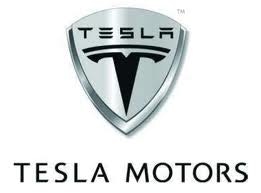Tesla Motors Inc (NASDAQ:TSLA) has been seeing increased popularity—and controversy—in 2013 as its direct-to-consumer online sales model, business model and structure have gained the approval of car-buyers and investors, including fund manager Ken Griffin; see his full equity portfolio.

In the first six months of this calendar year, Tesla Motors Inc (NASDAQ:TSLA)’s stock price has tripled, the company paid back a $450 million government loan nine years early, and after producing about 5,000 cars last year, Tesla Motors Inc (NASDAQ:TSLA) is on pace to surpass its 20,000-car goal this year.
What does this mean?
If you do the math, for a company to produce 20,000 cars to sell them in a single calendar year, that will take an average production of just shy of 400 cars per week. To be accurate, the full 52-week average is 384 cars per week. With that in mind, Tesla Motors Inc (NASDAQ:TSLA) CEO Elon Musk commented that as the calendar passes the halfway point of the year, the company’s factory is now producing well north of 400 cars per week.
This is a far cry from the factory’s heyday, when it produced about 10,000 cars per week as a joint venture with General Motors Company (NYSE:GM) and Toyota Motor Corporation (ADR) (NYSE:TM) in the 1990s and early 2000s, but for a startup automotive company that offers a vehicle for $70,000, to have the opportunity to pass 20,000 vehicles produced in a year would be an obvious milestone.
What else did Musk say?
Musk went on to say that Tesla Motors Inc (NASDAQ:TSLA) should be able to produce 800 vehicles per week by late in 2014, which would be about the time that the company intends to roll out its Model X SUV, with a more compact version of the Model S and a compact SUV also in the pipeline over the next three years. “We going to have every kind of car you could possibly imagine,” Musk said. “If it moves, we’ll make it.”
He indicated that by the time a full line of vehicles hits the assembly line, the plant in Fremont, California would return to its pre-Tesla production level of 500,000 cars per year.
Musk predicted Tesla Motors Inc (NASDAQ:TSLA) would sell 21,000 Model S vehicles this year, with Europe and Asia deliveries launching during the second half of the year.
What should investors do?
Clearly, rising vehicle production means that Tesla’s fundamentals are slowly catching up with its inordinately overvalued stock price. While investors would be foolish to sell on valuation alone, it’s still reassuring that production milestones are being exceeded.
Based on current analyst averages, Tesla sports a Forward P/E just north of 150.0, with year-ahead EPS estimates ranging in the mid-$0.80 range. If Tesla can hit its quarterly EPS estimates—next quarter’s mark is $-0.16—it should be well on its way to reaching the long-range forecast Wall Street has set.
The sell-side expects earnings to grow by 32-33% a year over the next half-decade, above what’s expected of major competitors like Toyota Motor Corporation (ADR) (NYSE:TM) (27.3%) and General Motors Company (NYSE:GM) (15.5%). Tesla bears will cry that the automaker is much more expensive than these two peers—Toyota Motor Corporation (ADR) (NYSE:TM) trades at just 11.9 times forward earnings while General Motors Company (NYSE:GM)’s at 8.3 times forward EPS—but the fact of the matter is that momentum cantrump value in today’s current market environment, particularly with a stock (Tesla) that sports price targets of $150 a share.
Final thoughts
In short, Tesla investors have proven that they’re willing to treat Tesla like an Amazon.com, Inc. (NASDAQ:AMZN) or a Netflix, Inc. (NASDAQ:NFLX), meaning that they’ll choose non-traditional growth metrics when evaluating the stock, rather than standard valuation multiples. In Tesla’s case, its 20,000-car goal is a key indicator to watch, and if the company can jump over this hurdle, $150 a share is more than reasonable.
Toyota Motor Corporation (ADR) (NYSE:TM) has the Prius to head up its EV fleet and General Motors Company (NYSE:GM) has the Volt, but neither of these automobile lines have the gusto to capture investors’ imagination as the Model S, and by next year, the Model X. Eventually, Tesla’s Gen III model, with its rumored $30,000 sticker price, should allow the company to compete with Toyota Motor Corporation (ADR) (NYSE:TM) and General Motors Company (NYSE:GM) even closer. By that time, the bulls should have claimed absolute victory. Check out the big-money investors in Tesla here.
Disclosure: none




